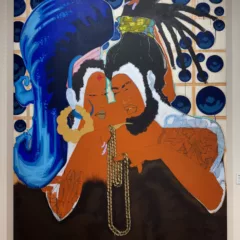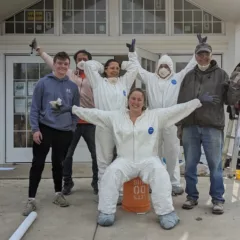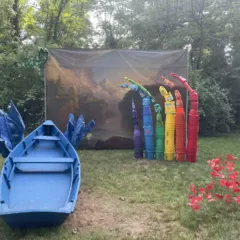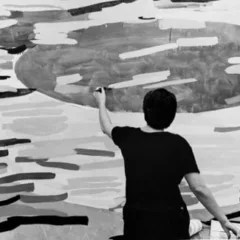Glen Foerd on the Delaware had long been on my list of places to see in and around Philadelphia, but it took an art installation to get me there. The1850s house sits on eighteen acres of still unspoiled riverfront property some 14.8 miles north of City Hall – it is the only one of a number of riverfront houses built as summer homes for wealthy Philadelphians, and the only extant house open to the public. A visitor could easily imagine that the city is miles away from this unexpectedly rural-feeling bit of North Philadelphia. In 1979 it was added to the National Register of Historic Places, where it provides a perpetual reminder that money does not buy taste and that there is precedent for our current president’s hope that sufficient wealth and gilt interiors will buy social standing.
The house’s managers commissioned several artists to respond to it’s history and structure, among them Talia Greene who created “Threadbare and Tarnished: Tales from a Gilded Age” in a small room off the hallway that leads from the mansion’s front door to its rear porch. I was particularly interested in seeing it because I had missed an earlier and more elaborate installation that Green created last year at the Morris-Jumel Mansion in upper Manhattan.
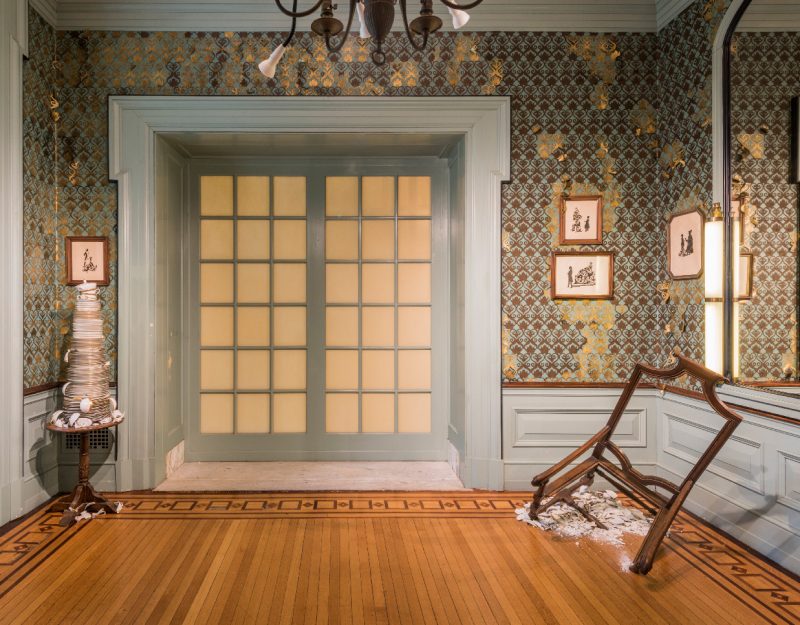
The title of Greene’s installation was taken from the novel written by Mark Twain in collaboration with Charles Dudley Warner, “The Gilded Age (Annotated): A Tale of Today” (1873). As noted in the reference section of the U.S. Senate’s website: “The book is remarkable for two reasons–it is the only novel Twain wrote with a collaborator, and its title very quickly became synonymous with graft, materialism, and corruption in public life. Historians have adopted “the gilded age” as a descriptive title for the era.”
Encountering “Threadbare and Tarnished,” I had the feeling that something dire had occurred in the house some time in the late Nineteenth Century and the room had been untouched since, rather like Miss Havisham’s dining room in Great Expectations which was still set for her wedding feast, eternally awaiting the errant bridegroom. In the far corner a small table is piled high with gold-edged dishes, some of which have fallen to the floor where their shards remain. Opposite, a dining chair lacking a leg and several cross-bars is upended and listing at an odd angle. Together the objects hint at past violence.
The room is papered in a design of a golden lattice over a turquoise ground; closer inspection reveals that in several areas the gold is peeling off the walls to reveal a layer of dirt, Greene’s visual metaphor for the unacknowledged labor which had supported and built this ostentatious house. The wallpaper looks so appropriate to the house that I was surprised to learn that the artist had found bare walls and created every bit of the room’s decoration and furnishings.
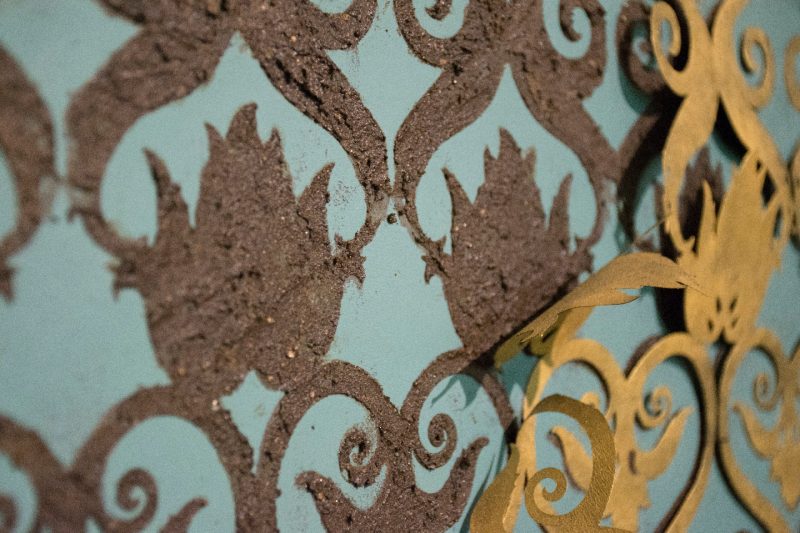
Several walls are hung with framed silhouettes; Greene found some of the silhouettes in Glen Foerd’s storerooms and created others in a matching style. Those she found depict well-dressed men and a boy; Greene’s creations juxtapose those same figures with a seated beggar and an assortment of barefoot urchins who are piled in improbable mounds or placed in contorted positions; in one instance Greene’s well-dressed boy is standing on the back of a barefoot boy hunched on the ground. In another a gentleman stands with his back to a dreadful mound of bodies that look like war dead.
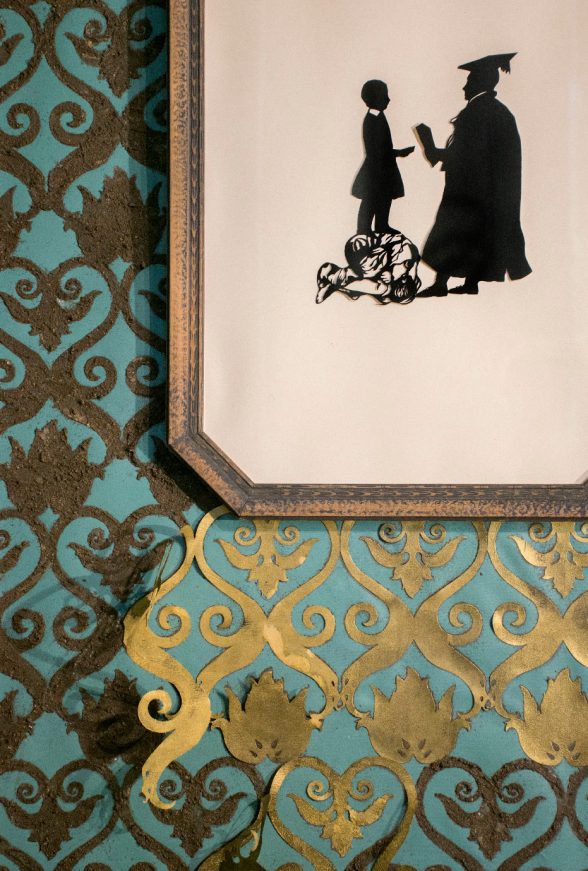
The artist based her depictions of the poor on photographs by the pioneers of social documentary such as Louis Hine and Jacob Riis. Their work showed the abject living conditions of workers displaced from an agricultural economy to an industrial one. The caretakers of Glen Foerd, to their credit, are beginning to research the previously unrecorded workers whose labor provided the wealth behind the mansion and the staff who maintained it. The website records the story of an African American butler during the early Twentieth Century.
We are living in another gilded age, and I wonder what North Philadelphia neighbors left behind in the economic boom make of this house that their ancestors could only have entered by the servants’ door, if at all.


